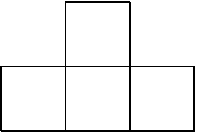Problems
Prove that the triangle \(ABC\) is regular if and only if, by turning it by \(60^{\circ}\) (either clockwise or anticlockwise) with respect to point A, its vertex B moves to \(C\).
Two perpendicular straight lines are drawn through the centre of the square. Prove that their intersection points with the sides of a square form a square.
Prove that if you rotate through an angle of \(\alpha\) with the center at the origin, the point with the coordinates \((x, y)\), it goes to the point \((x \cos \alpha - y \sin \alpha, x \sin \alpha + y \cos \alpha)\).
Prove that under homothety, a circle transforms into a circle.
Two circles touch at point \(K\). The line passing through point \(K\) intersects these circles at points \(A\) and \(B\). Prove that the tangents to the circles drawn through points \(A\) and \(B\) are parallel.
Let \(ABCD\) be a square and let \(P\) be any point in the plane. For each side of the square, take its midpoint. Reflect \(P\) about each of these four midpoints. Show that the four reflected points form the vertices of a square.
The points \(A\) and \(B\) and the line \(l\) are given on a plane. On which trajectory does the intersection point of the medians of the triangles \(ABC\) move, if the point \(C\) moves along the line \(l\)?
A plane contains \(n\) straight lines, of which no two are parallel. Prove that some of the angles will be smaller than \(180^\circ/n\).
Cut an arbitrary triangle into 3 parts and out of these pieces construct a rectangle.
Fill an ordinary chessboard \(8\times 8\) with the tiles shown in the figure.
